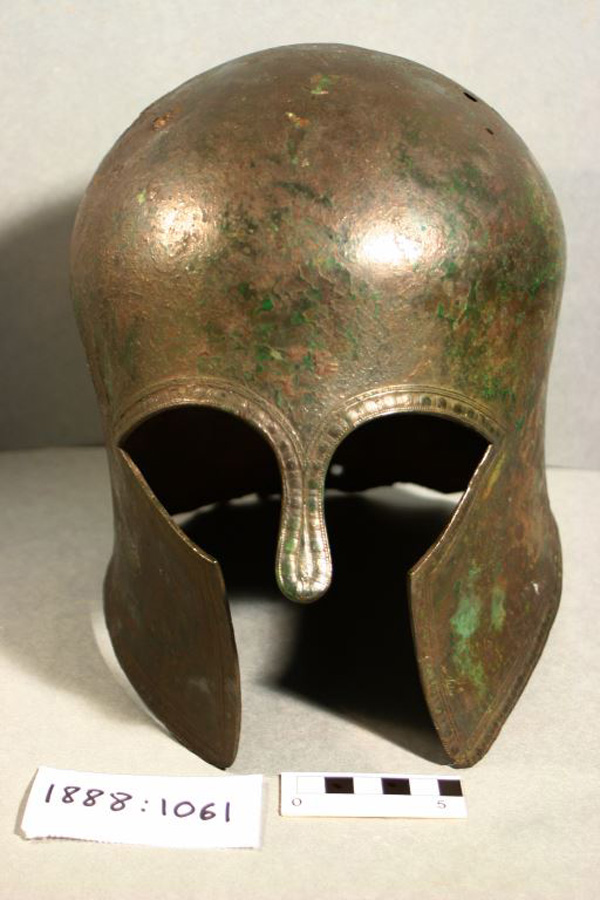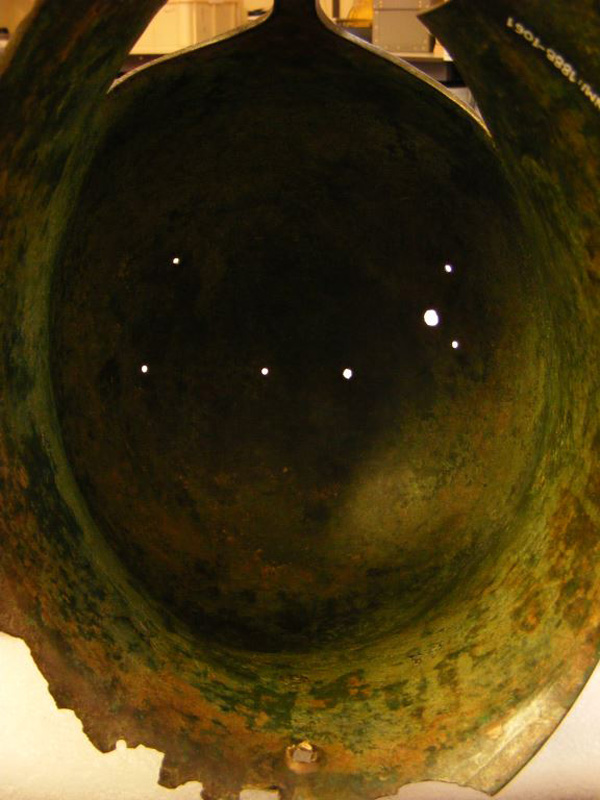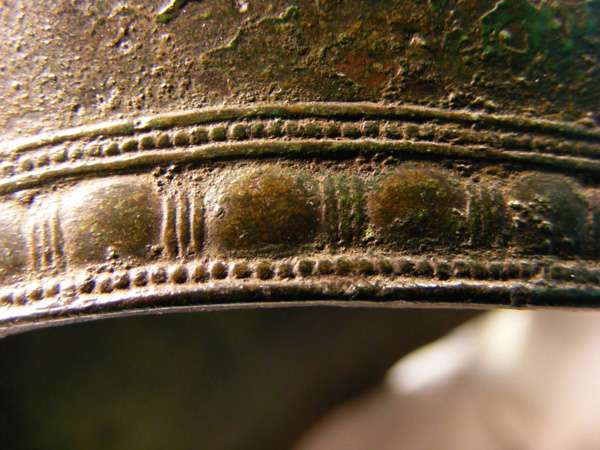7th-6th Century BC
Corinthian Helmet
This Corinthian helmet, beaten from a single sheet of bronze, is of the type developed in Greece in the 7th and 6th centuries BC.
By Chris Harbidge
Many variations of this style of helmet were developed by the ancient city states of Greece and by the 5th century were also adopted by settlements in Italy. While this type of helmet is commonly known as Corinthian, it is debatable as to whether it originated in the city of Corinth. Much of the evidence to support its link to Corinth can be found in the writings of Herodotus and the many examples of this type of helmet found on Corinthian vases and pottery.
Description of the object
This helmet was purchased by the National Museum of Ireland in 1888 as part of a collection belonging to Lord Alfred Denison, Earl of Londesborough. His extensive collections were sold at auction in London in 1888.
In the acquisition register of the National Museum of Ireland , the original entry for this object, numbered HA:1888.1061, reads:
“Helmet, bronze; nose-guard. Antique Greek. Londesboro' Collection.”
A further description in the museum’s acquisitions list reads:
“Helmet, bronze, with nose-guard; the edge with beaded ornament; on the top are seven holes which were for the purpose of attaching a crest. Antique Greek. Bought (Londesborough Collection).”

Fig. 2: Corinthian helmet with reference
Who wore the helmet?
The helmet is designed to completely cover the head with a narrow T-shaped slot for vision. A Greek soldier of this period - commonly called a hoplite - would also have worn body armour over his chest and legs, and carried a large shield, along with a number of weapons such as a sword, javelin and spear. While the design of the helmet may have protected a Greek hoplite from a blow to the head, it would offer little visibility in battle, and inhibit the ability to hear.
There are man-made holes at the top of the helmet which may have been developed in order to attach a crest of horse hair, which could be affixed front to back, on two separate stilts or traversed across the top. Also present is a larger puncture which may have been caused by a blow from a spear or javelin.

Fig. 3: Interior of the Corinthian helmet
Many examples of Corinthian helmets are decorated and this particular helmet has an elaborate beaded design running around the edge. Helmets of this type were expensive to construct and, for many Greek hoplites, the level and detail of decoration reflected their social standing.

Fig. 4: Corinthian helmet decoration
Learn More...
-
Everson, Tim, (2004). Warfare in Ancient Greece: Arms and Armour from the Heroes of Homer to Alexander the Great, (Stroud: Sutton)
-
Connolly, P. (1981). Greece and Rome at war, (London, Macdonald)
-
Snodgrass, A.M. (1967). Arms and armour of the Greeks, (Thames & Hudson)
Acknowledgements
All images courtesy of Nieves Fernandez, National Museum of Ireland
Location:
Corinthian Helmet is located at:
In Storage
Previous artefact:
Cleek used in Slaughter of Pigs
Next artefact:
